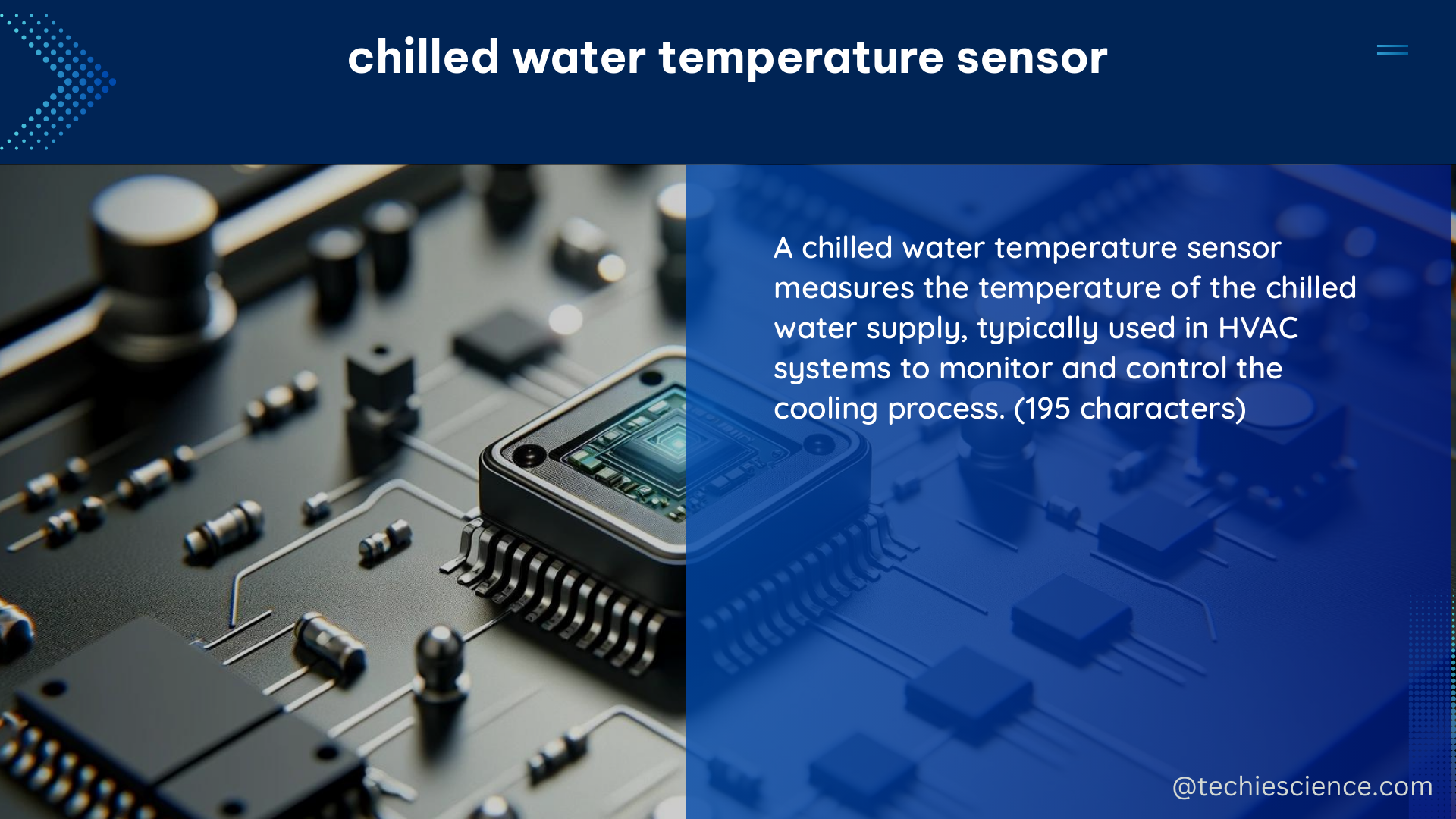The chilled water temperature sensor is a critical component in data centers and chilled water plants, as it helps measure and control the temperature of the chilled water used for cooling electronic equipment. Accurate and precise temperature measurements are essential for ensuring efficient energy usage and protecting the equipment from overheating.
Importance of Chilled Water Temperature Sensors
In data centers, chilled water temperature sensors are often used in conjunction with flow measurement devices to determine thermal energy production and utilization metrics. By measuring the flow rate and temperature difference of the chilled water, engineers and data center operators can gain a greater degree of control over the chiller plant, data center, or entire building’s energy usage.
The accuracy of chilled water temperature sensors is typically measured in terms of end-to-end temperature uncertainty, which encompasses the entire chain of the temperature measurement process, including the temperature sensor, transmitter, wiring, and data acquisition system. Typical sources of error that may affect the end-to-end temperature uncertainty include thermowell type temperature sensors installed in thermowells, which are not in direct contact with the water, and the conductive thermal compound within the thermowells, which tends to dry out over time. Additionally, the location of temperature sensors can introduce errors, particularly if sensors for the chilled water supply are installed in locations exposed to direct sunlight.
To ensure accurate temperature measurements, it is recommended to use temperature sensors with a long-term end-to-end temperature measurement uncertainty of ± 0.05 °C. This level of accuracy is necessary to allow for optimization of the plant operation, particularly in cases where the chiller plant serves multiple departments within a building, and thermal energy needs to be accurately apportioned and cost-allocated.
Advancements in Chilled Water Temperature Sensor Technology

While traditional chilled water temperature sensors have been used for many years, advancements in technology have led to the development of more sophisticated sensors that can provide even greater accuracy and precision.
Platinum Resistance Temperature Detectors (RTDs) and Thermistors
Some sensors use platinum RTDs or thermistors to measure water temperature, which can provide a long-term end-to-end temperature measurement uncertainty of ± 0.05 °C. These sensors are highly accurate and resistant to electromagnetic interference, making them ideal for use in data centers and other environments with high levels of electrical noise.
Wireless Sensors
Another advancement in chilled water temperature sensor technology is the use of wireless sensors, which can provide real-time temperature data without the need for physical wiring. This can be particularly useful in data centers and other environments where physical access to the sensors may be limited.
Self-Calibrating Sensors
Some chilled water temperature sensors are designed to be self-calibrating, which can help ensure accurate and consistent temperature measurements over time. These sensors use internal calibration algorithms to adjust for any drift or changes in the sensor’s accuracy, providing a more reliable and accurate temperature measurement.
DIY Chilled Water Temperature Sensor
While it is generally recommended to use professionally manufactured chilled water temperature sensors, it is possible to build your own sensor using off-the-shelf components. To build your own chilled water temperature sensor, you will need the following components:
- A temperature sensor, such as a thermocouple, RTD, or thermistor
- A microcontroller, such as an Arduino or Raspberry Pi, to read the temperature data from the sensor
- Wiring and connectors to connect the sensor to the microcontroller
- Software to program the microcontroller and display the temperature data
To build the sensor, simply connect the temperature sensor to the microcontroller using the appropriate wiring and connectors. Then, write software to read the temperature data from the sensor and display it on a screen or transmit it to a remote device.
It is important to note that building your own chilled water temperature sensor may not provide the same level of accuracy and precision as a professionally manufactured sensor. Additionally, building your own sensor may require a significant amount of time and expertise, particularly if you are not familiar with electronics or programming.
Technical Specifications
The technical specifications of a chilled water temperature sensor will vary depending on the manufacturer and model. However, some common specifications to look for include:
| Specification | Description |
|---|---|
| Temperature Range | The range of temperatures that the sensor can accurately measure. Typical ranges are -20 °C to 80 °C or -40 °C to 120 °C. |
| Accuracy | The degree of accuracy of the sensor, typically measured in terms of end-to-end temperature uncertainty. Recommended accuracy is ± 0.05 °C. |
| Response Time | The time it takes for the sensor to respond to changes in temperature. Typical response times are 1-10 seconds. |
| Wiring and Connectors | The type and rating of wiring and connectors used to connect the sensor to the data acquisition system. Common options include 4-20 mA, 0-10 VDC, or Modbus RTU. |
| Environmental Ratings | The sensor’s resistance to environmental factors such as moisture, dust, and electromagnetic interference. Typical ratings include IP65 or NEMA 4X. |
By understanding the technical specifications of chilled water temperature sensors, you can select the right sensor for your application and ensure accurate and reliable temperature measurements.
References
- Thermal Guidelines and Temperature Measurements in Data Centers, Lawrence Berkeley National Laboratory, 2020-09-15, https://datacenters.lbl.gov/sites/default/files/FINAL%20Thermal%20Guidelines%20and%20Temp%20Measurements%209-15-2020.pdf
- Sensors for Measuring Chilled Water Production and its Uses, Schneider Electric Blog, 2013-02-20, https://blog.se.com/datacenter/architecture/2013/02/20/sensors-measuring-chilled-water-production/
- Measurement and Verification (M&V) for Chilled Water Plant System, Building and Construction Authority of Singapore, 2018-06-04, https://www1.bca.gov.sg/docs/default-source/docs-corp-buildsg/sustainability/faqs-for-measurement-and-verification.pdf

The lambdageeks.com Core SME Team is a group of experienced subject matter experts from diverse scientific and technical fields including Physics, Chemistry, Technology,Electronics & Electrical Engineering, Automotive, Mechanical Engineering. Our team collaborates to create high-quality, well-researched articles on a wide range of science and technology topics for the lambdageeks.com website.
All Our Senior SME are having more than 7 Years of experience in the respective fields . They are either Working Industry Professionals or assocaited With different Universities. Refer Our Authors Page to get to know About our Core SMEs.